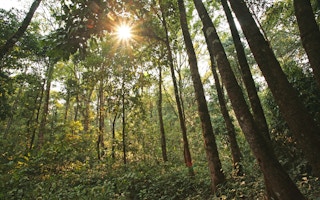The extent and rate of change to a country’s forest cover provides a useful guide for designing context-specific and effective REDD+ policies, according to researchers from the Center for International Forestry Research (CIFOR).
REDD+ (Reducing Emissions from Deforestation and Forest Degradation) is a U.N.-backed climate change mitigation scheme that aims to reduce global greenhouse gas emissions by creating incentives that encourage land managers to conserve, restore and sustainably tend forests.
Experience has shown that if REDD+ policies are to be effective, they must be tailored to the specific circumstances in a country, said Arild Angelsen, senior associate at CIFOR and professor of economics at the Norwegian University of Life Sciences.
“Many ask what is an appropriate REDD+ policy for a country, and the response is often: ‘it depends on national and local circumstances’. That is, of course, correct, but it is not a very useful reply,” Angelsen said.
To open up the “it depends” answer and to provide more policy guidance, Angelsen and Tom Rudel, a professor of human ecology at Rutgers University in New Jersey, wrote a paper titled “Designing and implementing effective REDD+ policies: A forest transition approach”, published in Review of Environmental Economics and Policy.
“We’re saying that what ‘it depends on’ is the stage in the forest transition of the country or region,” Angelsen said.
“This is a rough categorization, with local variation, but we believe it’s a very useful one.”
Tress in transition
According to the proposed forest transition framework, the forest conditions in a country or region move through three main stages.
In the first stage, “core forests”, a country has high forest cover and low deforestation; examples of countries in this stage are Suriname and Gabon.
The second stage, “frontiers”, is characterized by accelerated deforestation and shrinking forest cover; Indonesia is an example.
Countries in the third stage, “forest–agricultural mosaics”, have lost much of their old-growth forests, forests and agriculture coexist in the same landscape, and reforestation activities often get underway in this stage; examples are El Salvador and Côte d’Ivoire.
“Incentives should be tailored to the forest conditions, and the forest transition framework can help guide this,” Angelsen said.
A useful feature of the framework is that countries broadly grouped into each stage have many characteristics in common, Angelsen and Rudel’s analysis indicates. That is, changes in land cover, the substance of forest policy and the capacity to implement new policy all vary with the stage of the forest transition.
Population density, social characteristics and governance also change along the forest transition curve: population densities are 10 times higher in forest–agriculture mosaics than in core forests; core forests are home to some of the world’s poorest people; and tensions over land rights tend to erupt into conflicts in forest frontier regions.
“Given the different characteristics at each stage, and hence the need for different policies and the differences in ability to implement policies, we argue that different policies or sets of policies are going to be most appropriate and most effective at different stages of the forest transition,” Angelsen said.
Mix and match
The authors identify four types of policy options and match them to the stages of the forest transition based on the likely effectiveness of the policies for each stage.
Their resulting matrix offers a comprehensive, easy-to-follow “mix-and-match” guide for developing effective policies.
For countries in the core forest stage, they suggest, the aim is to reinforce the preexisting passive preservation of forests, primarily by avoiding triggering the acceleration of deforestation and carbon emissions through infrastructure and other projects. Other useful policies at this stage are to clarify property rights, in order to avoid land rushes later, and to set up protected areas.
The aim in the frontier stage is to find ways to reduce the rent from agriculture – and hence from deforestation and forest degradation – and to speed up and strengthen the forces that will eventually stabilize the forest cover, as happens in the third stage. The authors argue that most policies are useful at this stage, including reversing or countering government policies that had historically favored frontier expansion.
REDD+ policies at this stage should also aim to reduce the length of time the country experiences frontier conditions.
“In a REDD+ world, the stage of deforesting of frontiers would last only a short time and would be confined to small areas, and forest–agriculture mosaics would contain more forests than in earlier stages,” Angelsen said.
Countries in the final stage of the forest transition have better-established property rights and better-developed markets. The authors suggest that these countries will therefore benefit from tree planting, improved agricultural technologies to boost productivity, and payments for environmental services, although incentives would be for restoring forest rather than for protecting it.
However, policy makers will have to do more than just introduce specific REDD+ policies, the authors emphasize.
“At all stages, equally important is avoiding policies and projects that trigger and reinforce deforestation, such as road and infrastructure projects and perverse agricultural subsidies,” Angelsen said.
“This approach may in some cases conflict with development objectives, but policy packages can make it win-win. And, after all, REDD+ is about climate, and climate change is possibly the greatest future risk we face for development in poor countries.”










